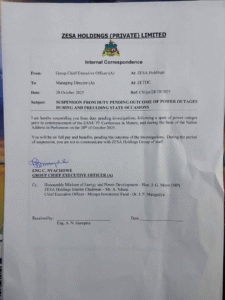ZIMBABWE’S CURRENCY CHAOS: NEW ZiG SYSTEM SPARKS MARKET PANIC AND EXCLUSION

The recent introduction of Zimbabwe’s new currency, the Zimbabwe Gold (ZiG), has plunged the market into chaos, leaving the poor and vulnerable without access to financial services. Since last Friday, ordinary citizens who relied on Real-Time Gross Settlement (RTGS), bond notes, and Ecocash have been unable to make essential transactions.
The turmoil began over the weekend when these individuals found themselves locked out of the system, unable to purchase daily necessities. The New Reserve Bank of Zimbabwe’s governor, John Mushayavanhu, initially assured that the banks would transition within a few days. However, the timeline has now been extended to the end of the month, causing widespread uncertainty and inconvenience.
Econet, a major player in the market, has stated that Ecocash has been successfully reconfigured to operate with ZiG, completing the conversion process. Despite this progress, RTGS and bond notes remain inactive. The public’s hesitance to embrace the new currency is fueled by fears of unfavorable exchange rates and potential financial losses due to arbitrage, in a country where a myriad of local currencies adds layers of complexity to the financial system.
The banks, still grappling with system upgrades, sent out notifications over the weekend informing customers of their inability to conduct transactions. “We performed the currency conversion from ZWL to ZiG over the weekend on our core banking system,” stated a message from Stanbic Bank. “However, we are working on system verification checks, therefore we will delay the provision of some digital services.”
This disruption has sparked panic in the marketplace. Informal retailers have started to reject bond notes or have hiked prices significantly. Public transport operators are capitalizing on the chaos by charging fares in US dollars.
Zimbabwe’s history with currency instability is notable, particularly the infamous 2008 economic crisis characterized by hyperinflation and the printing of one-hundred-trillion-dollar notes. The central bank’s latest attempt to stabilize the economy involves rolling out the ZiG as a structured currency aimed at restoring value to the domestic currency, which has been severely battered by volatility and inflation.
Over 80% of transactions in the country are conducted in hard currencies, primarily the US dollar. As a result, most retailers and service providers now prefer dealing in the American currency, viewing the new ZiG with skepticism and doubt. On its debut last Friday, the exchange rate was set at US$1 to ZiG 13.5616. This move intends to phase out bond notes that have been in circulation since 2016.
Retail prices have surged following the currency announcement. Before the change, US$0.50 was equivalent to ZW$3,500 in bond notes. Now, it has escalated to ZW$5,000, with some retailers demanding as much as ZW$10,000 for goods originally worth US$1, exploiting the arbitrage opportunities before the old currency is completely phased out later this month.
As part of the transition, banks are scrutinizing large deposits of bond notes, querying depositors who attempt to deposit ZA$100,000 or more – a sum worth less than US$20 on the parallel market. The banking industry, through efforts led by the Bankers Association of Zimbabwe chief executive Fanwell Mutogo, is working diligently to complete the reconfiguration process. “All banks are diligently working on the conversion from ZWL to ZiG, and we are hoping most banks will be back online on the ZiG platform by the end of the day tomorrow,” Mutogo stated.
The public, particularly those without bank accounts, has been given a 21-day window to deposit their old bank notes at designated points. This transitional period is critical as Zimbabwe strives to navigate through its latest economic reform, aiming for a smoother and more inclusive financial ecosystem.




